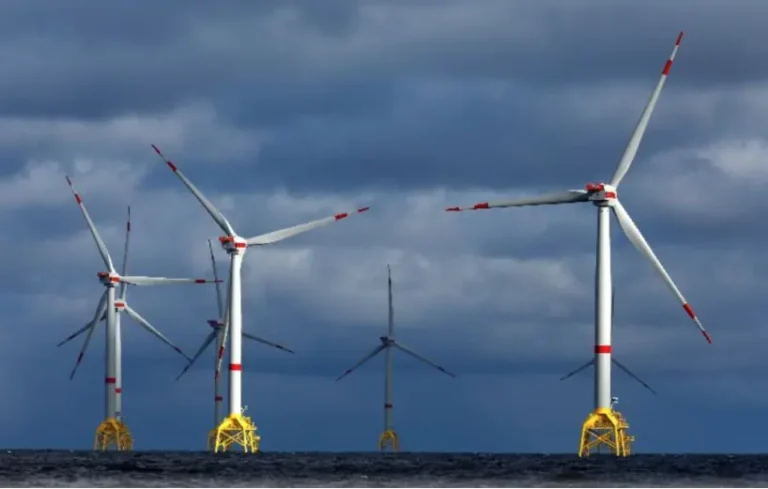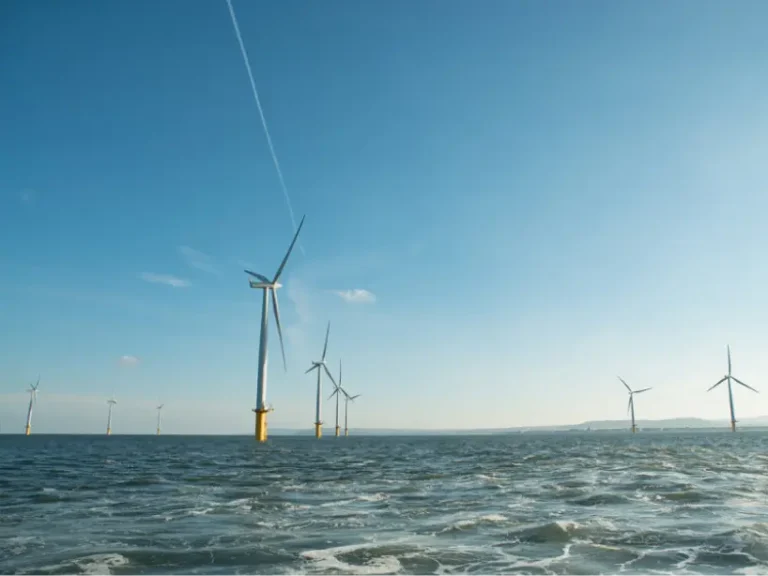Introduction
The offshore wind energy industry continues to grow rapidly as countries worldwide aim to reduce carbon emissions and embrace renewable energy sources. One of the most exciting new projects is being developed off the coasts of Yeu and Noirmoutier in France. This project, led by the Eoliennes en Mer Iles d’Yeu et Noirmoutier (EMYN) consortium, represents a significant step toward a cleaner energy future. Utilizing advanced floating wind farms and high-capacity wind turbines, this ambitious project will contribute to Europe’s renewable energy goals.
About the Offshore Wind Energy Project
The offshore wind farm is a joint venture of key international players, including Ocean Winds, Sumitomo Corporation, La Banque des Territoires, and Vendée Energie. This collaboration underscores the importance of cross-border partnerships in advancing clean energy initiatives.
Location and Scale
• Location: Off the islands of Yeu and Noirmoutier, France
• Total Capacity: 496 MW
• Project Timeline:
• Spring 2024: First subsea cables will be laid
• 2025: Expected project commissioning
• Phased Installations:
• Phase 1 in Q3 2024
• Phase 2 in Q2 2025
Once operational, the wind farm will produce enough energy to power hundreds of thousands of homes, underscoring the immense potential of offshore wind energy as a reliable renewable energy source.
Key Components and Features of the Project
Siemens Gamesa Wind Turbines
The project will employ 62 Siemens Gamesa 8 MW wind turbines, which are among the most advanced turbines available today. These turbines are being produced at Siemens Gamesa’s facility in Le Havre, France, representing a combination of local manufacturing expertise and international collaboration.
Each wind turbine is designed to maximize energy output, even in the challenging conditions of the open sea. By using cutting-edge technology, the project ensures cost efficiency and high installed capacity, allowing it to contribute substantially to the region’s renewable energy needs.
Floating Wind Farms
One of the most remarkable aspects of the project is its incorporation of floating wind farms, an emerging technology that allows wind turbines to be placed in deeper waters where wind speeds are higher. This innovation helps to harness more consistent wind power, improving the overall efficiency of the energy produced.
Floating wind farms are a game-changer for the offshore wind industry, as they open up vast new areas of the ocean for wind farm installations, which are not accessible to traditional fixed-bottom turbines.
Project Financing and Economic Impact
The total investment in the project is estimated at around EUR 2.5 billion, underscoring the scale and ambition of this initiative. The financing is supported by a diverse group of international players, including the Japan Bank for International Cooperation (JBIC) and a consortium of 16 banks. Société Générale has been involved as the financial advisor, ensuring that the project benefits from both public and private funding.
Local Economic Benefits
The project will bring significant economic benefits to the surrounding local communities, including the creation of jobs both during the construction phase and in the long-term operation of the wind farm. The involvement of local companies like Vendée Energie also highlights the importance of ensuring that the transition to renewable energy benefits regional economies.
Environmental Impact and Global Significance
Transition from Fossil Fuels
This offshore wind project is part of a larger global effort to reduce reliance on fossil fuels. By generating clean electricity from wind, it will help reduce greenhouse gas emissions, contributing to the global fight against climate change. The farm’s expected output will be enough to prevent the emission of thousands of tons of CO2 annually, making it a cornerstone of France’s renewable energy strategy.
Energy Efficiency and Sustainability
Harnessing kinetic energy from wind, these turbines can continuously generate electricity without depleting resources, offering a sustainable alternative to traditional power sources like coal and natural gas. Offshore wind farms are also less obtrusive than onshore installations, reducing the visual and environmental impact on nearby communities.
The Importance of International Collaboration
The scale and complexity of this offshore wind energy project would not be possible without the collaboration between local and international partners. Companies from Japan, Europe, and beyond have come together to pool resources, expertise, and financial backing to bring this vision to life.
This type of international collaboration is essential for tackling the global challenges associated with climate change. By sharing knowledge and expertise, countries can accelerate the transition to renewable energy, contributing to a cleaner and more sustainable future.
Future of Offshore Wind and Renewable Energy
As the world continues to shift away from fossil fuels, projects like this offshore wind farm represent the future of energy production. Floating wind farms, in particular, are expected to play an increasingly important role in global energy strategy. As technology improves, the cost of offshore wind energy is expected to continue to decline, making it a more competitive and attractive option for countries seeking to reduce their carbon footprints.
Frequently Asked Questions (FAQs)
The total capacity of the project is 496 MW, enough to power hundreds of thousands of homes with clean, renewable energy.
The project will use 62 Siemens Gamesa 8 MW wind turbines, which are among the most advanced models available for offshore installations.
Floating wind farms allow turbines to be placed in deeper waters where traditional fixed-bottom turbines cannot be used. This technology enables the harnessing of higher wind speeds, increasing energy efficiency.
The project will generate clean energy, helping France and Europe meet their climate targets by reducing greenhouse gas emissions and reliance on fossil fuels.
Local communities will benefit from job creation and economic opportunities during both the construction and operational phases of the project.
Offshore wind energy is a renewable source that generates electricity without emitting CO2, helping to decrease the world’s dependence on polluting fossil fuels.
For more details on the role of Siemens Gamesa turbines in renewable energy, you can visit their official page here.
Additionally, check out the official project website of Eoliennes en Mer Iles d’Yeu et Noirmoutier here for updates and more technical details about the project.





